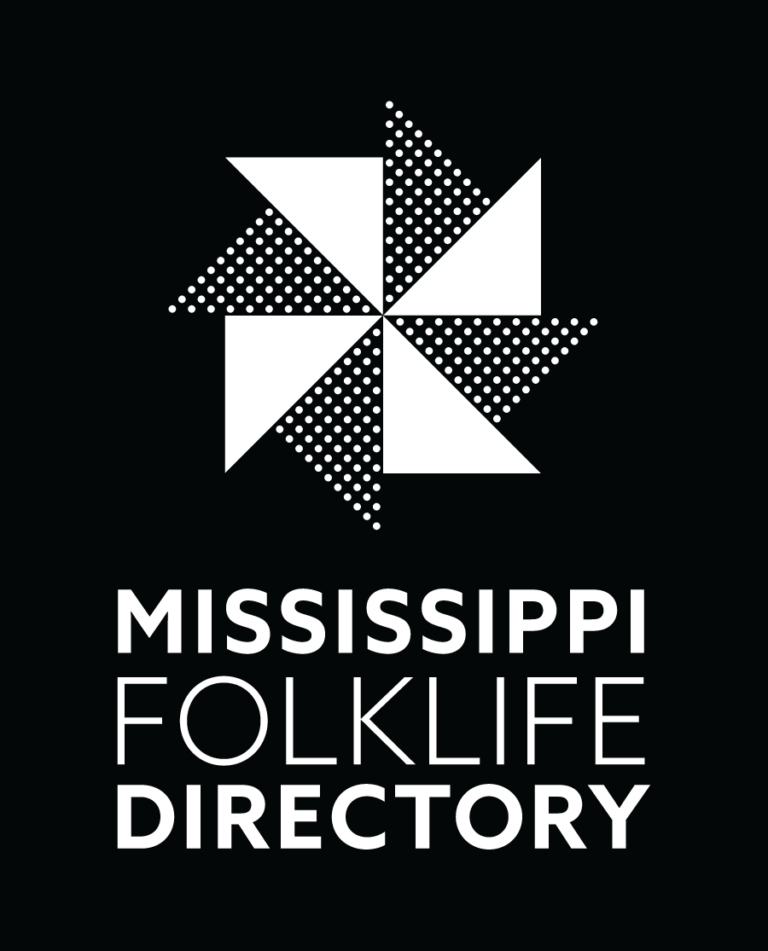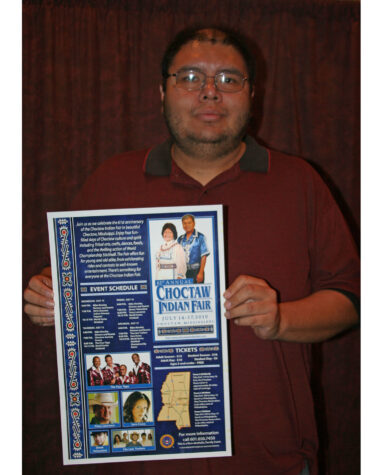Brian Willis brings a deep knowledge of Choctaw tradition to his job of Communications Editor for the monthly Choctaw Community News, the office of which is in the Pearl River neighborhood of Philadelphia. He was born in 1974 to Huey and Nancy Willis of the nearby Tucker community (there are eight Choctaw communities in Mississippi, most in or near Neshoba County). He became interested in journalism while at Choctaw Central High School and followed his graduation with a summer internship through the tribe’s Youth Opportunity Program with the Choctaw Community News. After a year at the University of Mississippi, he held that internship again. The balance of his activity shifted from college courses to the profession of journalism; sixteen years later, he would like to return to finish his degree, but wonders how he would find the time.
When Brian was a student at Tucker Elementary School, he learned traditional Choctaw Social Dance and wore the customary dance outfits, which feature decorations that have traditional meanings. The most prominent design element, series of diamonds in rows in bordered paths, represents the rattlesnake, which is honored because it keeps the rodent population from growing so large that crops are decimated. Undulating lines honor the mound named Nanih Waiya (“Leaning Hill”) in Winston County, a hill which figures importantly in Choctaw stories of creation and migration. Crosses represent pairs of stickball sticks—stickball is the most Choctaw of sports—and circles the stickball balls.
Brian employs these and other Choctaw symbols in his daily tasks. One of his jobs is to assemble funeral programs. He consults with the relatives of the deceased and follows their wishes meticulously, instructions which often include creating borders for the programs featuring diamonds, schematic stickball sticks, or, for example, baskets if the deceased made traditional cane baskets. While simple elements like diamonds emerge from computer programs, more complex images, like baskets, may come out of digital photographs. Brian doesn’t need to travel far to take pertinent pictures since the Choctaw Museum of the Southern Indian is in the same building as the Community News. In a related task, as the Choctaw Fair approached in 2010, he was asked to design a poster advertising it. That year, the visual hook in the poster (and in highway billboards, etc.) was the sash men and women wear in traditional dance outfits. These sashes honor Choctaw culture by featuring the diamond and curved line patterns, thus representing rattlesnakes and the Nanih Waiya.
Just as Brian writes prose that “stays with the facts,” “everything has to be in order . . . everything has to be just right” in his layouts and graphic art. His work is careful and subtle. Just as he incorporates Choctaw symbols into the visual aspect of his trade, he brings the traditional Choctaw values of modesty and honesty into a very modern profession not always noted for those qualities. He volunteered to design the cover for the program booklet for the 2009 powwow at the University of Southern Mississippi due to that event’s military theme; honoring the military is another central Choctaw value. His late father and several uncles and cousins have served. Brian designed that booklet cover as a tribute to them: “I wanted to make it good enough to where if they were to see it, they’d think it was a good job.”

